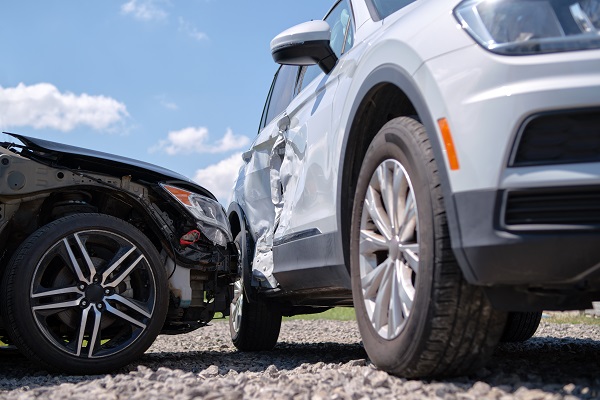T-Bone Accident: Determining Fault, Getting Treatment, and Filing for Compensation

When a vehicle slams into the side of another vehicle, this is known as a T-bone accident. It may also be referred to as a broadside collision, right angle collision, or AABS (auto accident, broadside). In severe cases, the impacted vehicle may spin out or rollover.
T-bone car accidents are traumatic events. Despite what movies would have you believe, most people don’t walk away from a side-impact collision without some kind of injury.
Unlike a front-end or rear-end collision, occupants inside the vehicle are only protected by the frame and doors. A person may bear the full brunt of the impact, resulting in significant or deadly injuries, especially if the vehicle doesn’t have side airbags.
Common Injuries From a T-Bone Accident
During a T-bone accident, occupants on the struck side of the vehicle are far more likely to sustain severe injuries. Side-impact airbags can protect occupants, but are less effective if the vehicle that was hit spins out and crashes into another vehicle or object.
A broadside collision can lead to a wide range of injuries. The most common injuries are:
- Fractures to the thigh, shin, and arm bones
- Shoulder injuries, including dislocation and torn rotator cuff
- Neck injuries caused by whiplash, such as strains, sprains, and herniated discs
Victims of a T-bone crash may suffer multiple injuries, including bruising, gashes, internal organ damage, concussions, traumatic brain injuries, and partial or complete paralysis. Treatment and recovery time will depend on the severity of the injuries and any pre-existing conditions.
Who Is At Fault in a T-Bone Accident?
Side impact collisions often occur at intersections, in parking lots, and on multi-lane roadways. These are typically busy places, with cars coming and going or crossing multiple lanes.
Broadside collisions are usually caused by a failure to yield right of way, failure to obey traffic signals, distractions, and poor judgment. Often, the driver of the car that strikes another vehicle in the side is typically the one found at fault for the accident. In some circumstances, though, the driver of the vehicle that was hit may be found at fault instead.
Here are a few different scenarios showcasing how a T-bone accident can happen and who may be found at fault:
Scenario 1 - A distracted driver barrels through a red light and smashes into a vehicle crossing the intersection. The driver who ignored the traffic light would be found at fault.
Scenario 2 - A driver makes a risky left turn believing they have enough time or that oncoming traffic will slow down. In most cases, the driver making the left turn would be found at fault, even though they were struck. This is because oncoming traffic has right of way.
Scenario 3 - A car is struck by a vehicle with faulty brakes as it passes through an intersection with stop signs. The driver who T-boned the vehicle would most likely be at fault despite paying attention and not intending to hit anyone. However, it may be discovered that the manufacturer of the brakes or a repair shop may be at fault instead for the brake failure.
In each T-bone accident case, the investigating law enforcement officer will investigate and make a preliminary determination about who was responsible. Be honest with them, exchange information with the other driver, and gather witness or video evidence to support your side of events.
If the insurance company tries to pin the blame for the accident on you, speak with an experienced T-bone car accident lawyer before giving a statement or signing any documents.
T-Bone Accident in Atlanta
If you have been injured in a side-impact accident, you should seek legal counsel — especially if the responding officer didn’t make a determination of who was at fault in the accident report, or they decided you were at fault for the wreck but you don’t agree.
Put your car accident case in the hands of an experienced and capable personal injury lawyer. Gary Martin Hays & Associates will build a strong case and work to get you the maximum settlement for your T-bone accident.
Contact us online for a free consultation or call (770) 934-8000 for immediate assistance.

 Find a location near you
Find a location near you